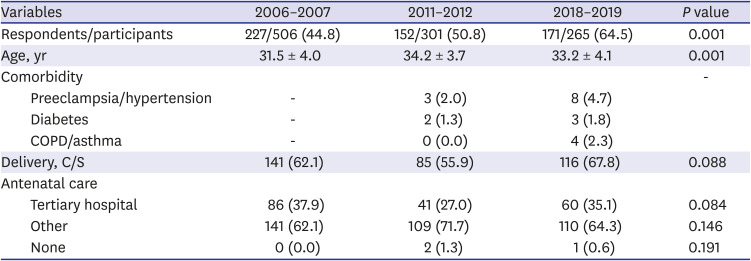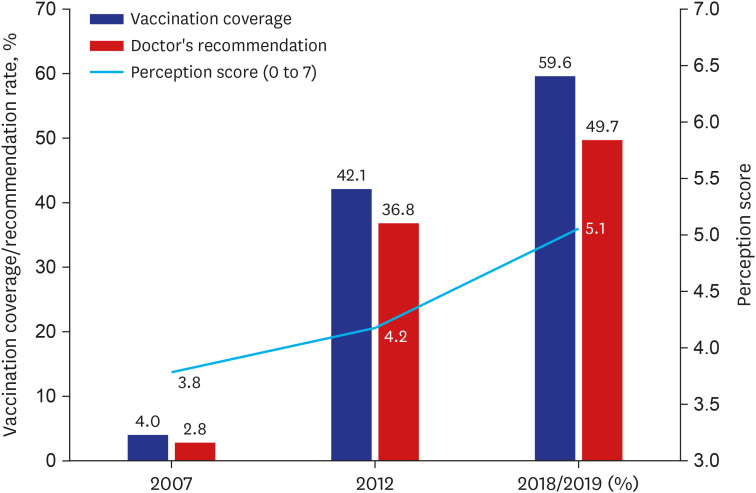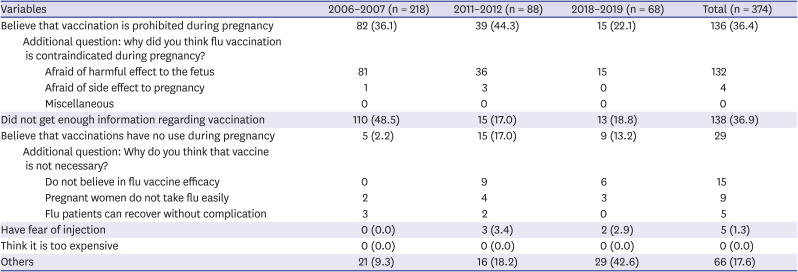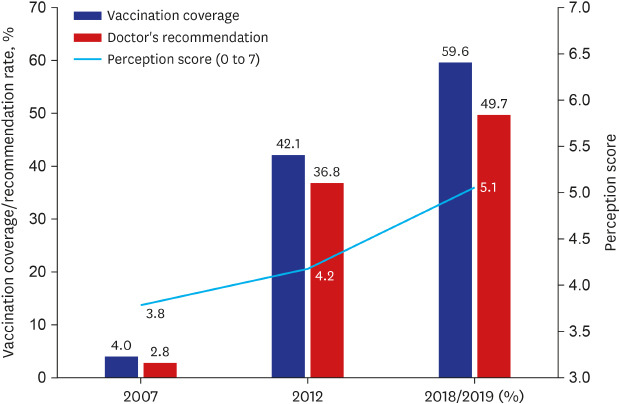1. Nicholson KG, Wood JM, Zambon M. Influenza. Lancet. 2003; 362(9397):1733–1745. PMID:
14643124.

2. Håberg SE, Trogstad L, Gunnes N, Wilcox AJ, Gjessing HK, Samuelsen SO, et al. Risk of fetal death after pandemic influenza virus infection or vaccination. N Engl J Med. 2013; 368(4):333–340. PMID:
23323868.

3. Rasmussen SA, Jamieson DJ, Bresee JS. Pandemic influenza and pregnant women. Emerg Infect Dis. 2008; 14(1):95–100. PMID:
18258087.



4. Sprenger MJ, Mulder PG, Beyer WE, Van Strik R, Masurel N. Impact of influenza on mortality in relation to age and underlying disease, 1967–1989. Int J Epidemiol. 1993; 22(2):334–340. PMID:
8505193.


5. Meier CR, Napalkov PN, Wegmüller Y, Jefferson T, Jick H. Population-based study on incidence, risk factors, clinical complications and drug utilisation associated with influenza in the United Kingdom. Eur J Clin Microbiol Infect Dis. 2000; 19(11):834–842. PMID:
11152308.


6. Zou S. Potential impact of pandemic influenza on blood safety and availability. Transfus Med Rev. 2006; 20(3):181–189. PMID:
16787826.



7. Irving WL, James DK, Stephenson T, Laing P, Jameson C, Oxford JS, et al. Influenza virus infection in the second and third trimesters of pregnancy: a clinical and seroepidemiological study. BJOG. 2000; 107(10):1282–1289. PMID:
11028582.


8. Coffey VP, Jessop WJ. Maternal influenza and congenital deformities. A follow-up study. Lancet. 1963; 1(7284):748–751. PMID:
14021958.


9. Saxen L, Hjelt L, Sjostedt JE, Hakosalo J, Hakosalo H. Asian influenza during pregnancy and congenital malformations. Acta Pathol Microbiol Scand. 1960; 49(1):114–126. PMID:
14442130.

10. Wilson MG, Heins HL, Imagawa DT, Adams JM. Teratogenic effects of Asian influenza. J Am Med Assoc. 1959; 171(6):638–641. PMID:
13845103.


11. Kim MJ, Lee SY, Lee KS, Kim A, Son D, Chung MH, et al. Influenza vaccine coverage rate and related factors on pregnant women. Infect Chemother. 2009; 41(6):349–354.

12. Nuzum JW, Pilot I, Stangl F, Bonar B. Pandemic influenza and pneumonia in a large civil hospital. J Am Med Assoc. 1918; 71(19):1562–1565.

13. Cowling BJ, Park M, Fang VJ, Wu P, Leung GM, Wu JT. Preliminary epidemiological assessment of MERS-CoV outbreak in South Korea, May to June 2015. Euro Surveill. 2015; 20(25):7–13. PMID:
26132767.


14. Kim OS, Yoon SW. Current state of influenza vaccination and factors affecting vaccination rate among pregnant women. J Korean Acad Nurs. 2014; 44(5):534–541. PMID:
25381784.


15. Ko HS, Jo YS, Kim YH, Park YG, Moon HB, Lee Y, et al. Knowledge, attitudes, and acceptability about influenza vaccination in Korean women of childbearing age. Obstet Gynecol Sci. 2015; 58(2):81–89. PMID:
25798420.



16. Kee SY, Lee JS, Cheong HJ, Chun BC, Song JY, Choi WS, et al. Influenza vaccine coverage rates and perceptions on vaccination in South Korea. J Infect. 2007; 55(3):273–281. PMID:
17602750.



17. Openshaw PJ, Dunning J. Influenza vaccination: lessons learned from the pandemic (H1N1) 2009 influenza outbreak. Mucosal Immunol. 2010; 3(5):422–424. PMID:
20555316.


18. Oh MD, Park WB, Park SW, Choe PG, Bang JH, Song KH, et al. Middle East respiratory syndrome: what we learned from the 2015 outbreak in the Republic of Korea. Korean J Intern Med. 2018; 33(2):233–246. PMID:
29506344.



19. Im JH. Alteration in influenza vaccination of the pregnant women and related factors since the pandemic in 2009 [master's thesis]. Incheon: Inha University;2014.
21. MacDonald NE, McDonald JC; Canadian Paediatric Society, Infectious Diseases and Immunization Committee. The benefits of influenza vaccine in pregnancy for the fetus and the infant younger than six months of age. Paediatr Child Health. 2014; 19(10):e121–2.

22. Noh JY, Seo YB, Song JY, Choi WS, Lee J, Jung E, et al. Perception and attitudes of Korean obstetricians about maternal influenza vaccination. J Korean Med Sci. 2016; 31(7):1063–1068. PMID:
27366003.












 PDF
PDF Citation
Citation Print
Print





 XML Download
XML Download